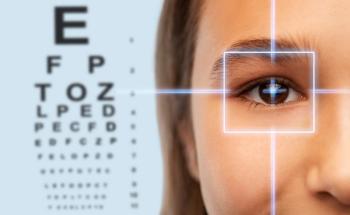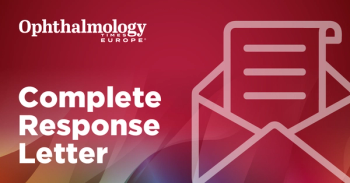
NICE announces UK approval of idebenone for treatment of Leber hereditary optic neuropathy
In a press release, the National Institute for Health and Care Excellence announced the first-ever approval for a mitochondrial disease treatment
The United Kingdom’s National Institute for Health and Care Excellence (NICE) has approved idebenone (Raxone, Chiesi) for treatment of Leber hereditary optic neuropathy (LHON) in patients 12 years of age and older. According to NICE, idebenone has been approved in final draft guidance, with NICE expected to publish final guidance in September.1 The National Health Service (NHS) will make the treatment available within 3 months of that publication date.
LHON is an inherited disease, and typically it first presents as painless blurring of central vision (unilateral or bilateral). It is a rapidly vision-threatening condition; many patients, most of them children or young adults in their 20s and early 30s, progress to complete vision loss within months. According to NICE, young men and boys are more likely to be diagnosed with LHON and experience subsequent vision loss. Around 250 people in England could be eligible for the new treatment, NICE said.1
Clinical evidence from long-term trials of idebenone demonstrate that it has a reparative or regenerative effect on cells in the retina and optic nerve. Re-engaging those cells can improve or restore vision, and reduce progressive vision loss from LHON, according to NICE. Idebenone, delivered via oral tablets, is the first licensed pharmaceutical product to address the causes of LHON.
Professor Patrick Yu-Wai-Man, NICE committee member and Professor of Ophthalmology at the University of Cambridge, commented on the approval. “LHON causes devastating visual loss, and it is a life-changing diagnosis for the affected individual and their family,” he said.1 “This new medicine will come as a great relief to the LHON community in this country bringing hope to those who have experienced significant visual loss from this mitochondrial genetic disorder.”
Helen Knight, Director of Medicines Evaluation at NICE, called LHON a "debilitating" condition that robs patients of independence.1 "The sudden change in sight can make daily activities such as reading, travelling and recognising faces very difficult or impossible," she said. ""The evidence shows this treatment could improve people's eyesight and help their quality of life by allowing them to live independently for longer."
UK-based mitochondrial disease charity
“While it isn’t a cure, this treatment offers real potential for patients to preserve or improve vision, giving the chance to regain independence, confidence and a better quality of life. And the fact that there is now a treatment available for mitochondrial disease brings hope for future drug development," said Katie Waller, a paediatric nurse and the head of patient programmes at the Lily Foundation.2 "The fact that there is now a treatment available for mitochondrial disease brings hope for future drug development.”
More information about idebenone access through the NHS will become available in the remaining months of 2025.
Reference
Hundreds with rare inherited eye disease to benefit after NICE recommends treatment. Press release. NICE. Published August 7, 2025. Accessed August 7, 2025.
https://www.nice.org.uk/news/articles/hundreds-with-rare-inherited-eye-disease-to-benefit-after-nice-recommends-treatment The Lily Foundation celebrates approval of first ever mitochondrial disease treatment by NICE. Press release. The Lily Foundation. Published August 7, 2025. Accessed August 7, 2025. https://www.thelilyfoundation.org.uk/news/first-ever-mitochondrial-disease-treatment-approved/
Newsletter
Get the essential updates shaping the future of pharma manufacturing and compliance—subscribe today to Pharmaceutical Technology and never miss a breakthrough.












































